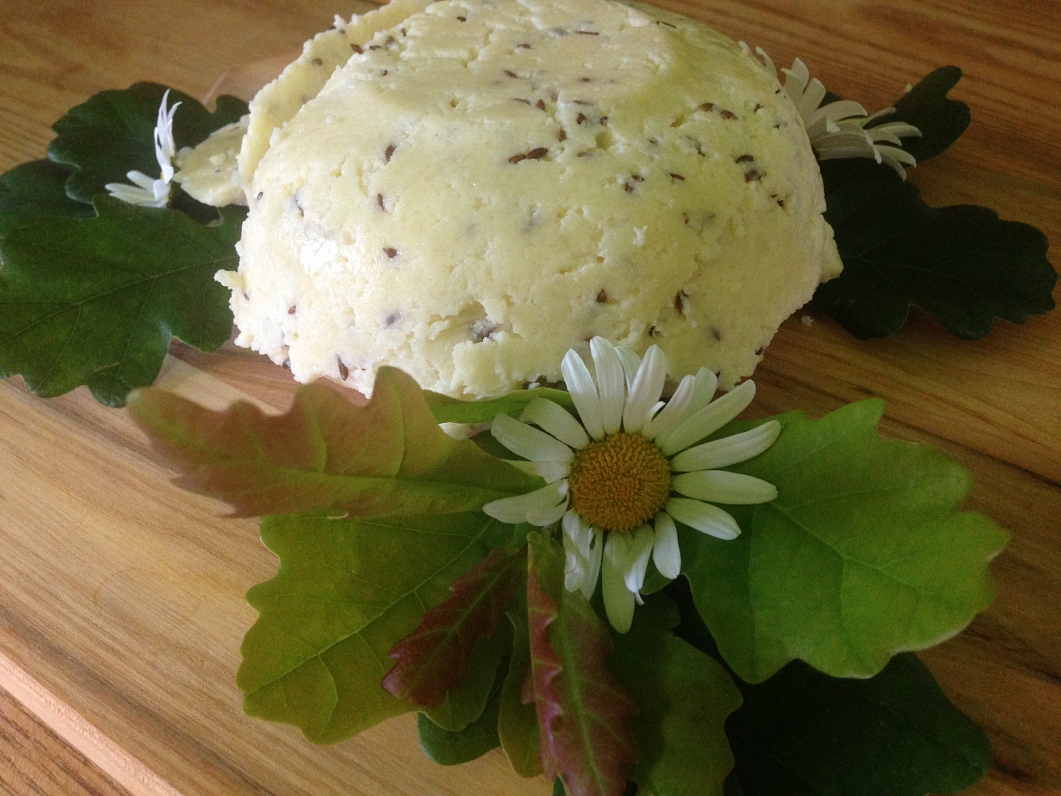Jāņi is also an opportunity to meet other Latvians and spend a really fun holiday together, compatriots around the world told Latvian Radio.
The founder of the "ALA basement" folk club, Krišjānis Putniņš , who was born and raised in Australia, moved to Latvia at the age of 21. Although he initially reserved the option to return to Australia after a year, he has not used the return ticket. However, Krišjānis has a vivid memory of Jāņi from his childhood in Australia, saying that it was good to celebrate there in the middle of winter, when you can light bonfires and jump over them, because in summer it would not be possible at all due to fire bans.
Regarding the Jaņi cheese, he remembers that the recipes were adapted to suit the circumstances : "No one really knew how to make that Jāņi cheese. And there were millions of variations. Some melted feta with some kind of cheddar cheese in the microwave and mixed it in to get that sour, cheesy taste.
Cumin is a must with all Jāņi cheeses. As Reinis Dancis, chairman of the Darwin Association of Latvians, admitted, Latvians are still experimenting with cheese in Australia, and feta still plays the main role. Mozzarella was also added to the mix.
Dancis said that celebrating Jāņi is a living and integral part of Latvian life in Australia - this year the celebrations will be held in Darwin, Adelaide and Sydney at the Latvian House. It will also be celebrated in Canberra and Melbourne. He revealed that, as in the tropics, the weather in Darwin is atypical for winter – the thermometer exceeds 30 degrees during the day, so a special permit is required to light a fire:
"We have a special license so that we can light a fire. When the fire burns out, we will jump over it, sing songs and dance."
Similarly, Latvians also celebrate St. John's Day in several places in Canada - in Saulaine, on an estate near Toronto, in Tērvete, on Latvian property in the Labrenči mountains of Quebec, halfway between Montreal and Ottawa, as well as in Sidrabene, which is close to Toronto, said Kaspars Reinis from Tērvete, Canada.
This year, the Latvians of Canada are putting their Jāņi in line with the Latvian song and dance festival in Canada: "We have a big Jāņi in Tērvete this year, because the fifty-member mixed choir "Aura" of the University of Latvia will visit, the traditional Jāņi procession will take place, there will be an Ottawa play, there will be dancing, singing, there will be cabbage and sausages."
The traditional procession means that they go from house to house – Latvians gather in front of the big house in Tērvete, Canada, and sing around the Latvian summer houses – there are about 30 of them there.
The traditions in each of the Latvian estates in Canada, where St. John's is celebrated, are slightly different. This year in Sidrabene, a popular Jāņi is planned, there will also be a children's club, but as Kaspars Reinis said, in Canada Jānis can be expanded into a marathon, from one event to the next, because they take place over three weekends. Similar to Australia, in Canada, lighting a bonfire on Midsummer is not so easy, because Quebec currently has a complete ban on fires.
There will be a bonfire in Luxembourg, because, as Liene Barons, a member of the board of the association "Luxembourg-Latvija", said, the celebration promises to be very fun : "Traditionally, at our celebrations, it is accepted that everyone comes with their own collection of flowers or herbs. Among us, there are some people who have private gardens, meadows, trees, oaks, then we all try to negotiate in a friendly way that we will cooperate – one will take flowers, the other will take herbs, the third will take oak branches, so that severyone will have enough. Then we will weave wreaths together, we will exchange flowers."
Līga Petrova, a representative of the Tipperary Latvian Society, has been living in Ireland for two decades, but she started organizing the festival only a year ago. This year will be her second experience in organizing a Midsummer celebration.
She said about the celebration: "Last year we made wreaths from white clover, we didn't cut ours in the garden so that it would grow and could be woven into a wreath. There are a lot of things growing on the sides of the road here, but you have to pick them very carefully.
"The Irish people do not recognize, do not support the picking of grasses or God forbid, plucking some oak leaf, some twig. But there are places where a Latvian will find an oak branch for a wreath. We look beautiful–- men in oak wreaths, girls in flower wreaths. We eat cheese, we jump over the fire, we sing songs by the fire."
It's the same with bonfires in Ireland – you're not really allowed to have fires, but if the owner who rents out the place for the celebration allows it, then dig a hole, gently remove the top layer of soil, and then you can have a bonfire.
It is clear that celebrating Jāņi for the diaspora involves adapting to local places and rules, but the most important thing is that the tradition is preserved.
Krišjānis Putniņš pointed out: "I think that it is important to continue this holiday in Latvian communities in exile abroad. I myself remember - when I was a child, it was a holiday where only Latvians gathered, but logically, as time goes on, more people make friends and marry local, non-Latvians, the festival is getting wider. This is the direction to go, and not only Latvians should be invited to the festival. Everyone has the opportunity to be ambassadors and promote it."



























